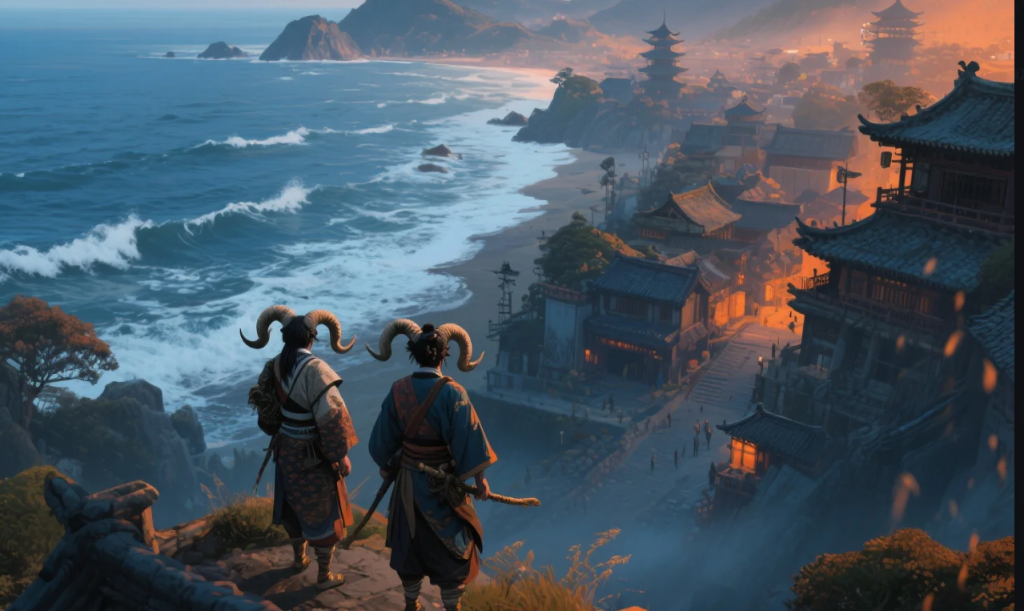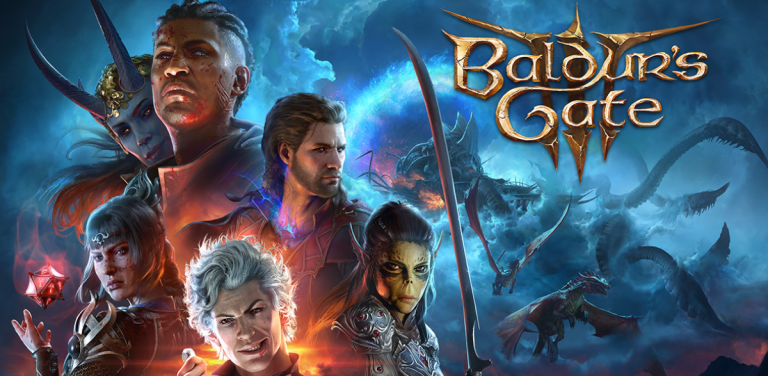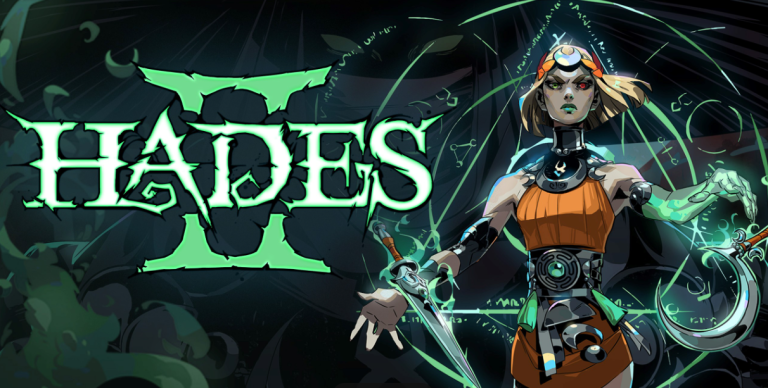
Can a spiritual successor rise from the shadows of a PlayStation masterpiece and carve its own legacy? Let’s talk about Ghost of Yōtei, a game that dares to duel with one of the greatest samurai titles of all time. Spoiler alert: It doesn’t just draw its katana—it swings hard.
The Hype Before the Storm 🎮⚔️
When whispers about Ghost of Yōtei started echoing across Reddit threads and Discord servers, fans of Ghost of Tsushima sat up straighter. Could it be? A spiritual successor to the critically acclaimed open-world samurai epic? Developed by the mysterious indie studio HanaBlade, backed by a team of ex-triple-A veterans and ambitious newcomers, Ghost of Yōtei promised to deliver an emotional, stealth-heavy, bushido-infused journey in the heart of Hokkaido’s wilderness.
It dropped with little fanfare—no massive marketing blitz, no over-the-top trailers narrated by deep-voiced men in leather jackets. Just one trailer. One katana. And one promise: “Honor is not given. It is reclaimed.”
First Impressions: The View from Mount Yōtei 🏔️
Let’s get one thing out of the way. This game is gorgeous. Not just “oh that’s pretty” gorgeous, but stop-in-your-tracks, photomode-abuse-level stunning. Ghost of Yōtei’s visual team clearly studied Sucker Punch’s aesthetic grammar and then added their own poetic flair.
The snowcapped landscapes of Hokkaido are brought to life with eerie quietude. Trees rustle like whispers, foxes dart through forests like little ghosts themselves, and the northern lights shimmer subtly at night, casting ghostly green glows over battlefields soaked in blood and honor.
And let’s not forget the titular Mount Yōtei. Always looming. Always majestic. Always reminding you of the peak you’re trying to climb—physically and metaphorically.
Storyline: A Ghost’s Burden 👻
Ghost of Yōtei doesn’t try to copy Jin Sakai’s story beat for beat. Instead, it tells a parallel tale with an entirely new protagonist: Aiko, a former shrine maiden turned reluctant assassin after her village is massacred by rogue warlords looking to control sacred land and spiritual power. Her transformation from peaceful healer to silent avenger is emotional, believable, and, at times, devastating.
While Ghost of Tsushima was about external war and internal conflict, Ghost of Yōtei flips it. It’s more about spiritual warfare—the tension between revenge and redemption, the clash between tradition and survival, and what happens when you stop being someone’s daughter and become your own ghost.
Aiko doesn’t have a guiding uncle or a clear villain. She has spirits, memories, and a sword that weighs more with every life it takes. If Tsushima was a samurai movie, Yōtei is a ghost story whispered by candlelight.

Gameplay: The Art of Subtlety and Steel
Let’s talk mechanics. Ghost of Yōtei is stealth-forward, not stealth-optional. If you try to go full Rambo, the game politely reminds you that you are not the main character in Sekiro. You’re a ghost, not a tank.
Combat Style: Aiko doesn’t block with brute strength. She parries with elegance. The game rewards precision, patience, and psychological warfare. You can throw down talismans to confuse enemies, whisper to distract guards, and even use spirit illusions to simulate reinforcements. If you enjoy the feeling of outsmarting instead of overpowering, you’re going to love this.
Spiritual Powers: Unlike Tsushima, which flirts with the supernatural but mostly stays grounded, Yōtei dives headfirst. You gradually unlock “Echo Arts”, spirit-based abilities that let you phase through enemies, become invisible under moonlight, or summon spectral foxes to scout areas. It’s not magic for magic’s sake. It’s tied directly into the Shinto mythology and narrative choices.
Customization: The gear system is intricate but not bloated. Every piece of armor or charm isn’t just stats—it’s a story token. Wear your fallen lover’s ribbon as a headband and get a speed boost when health is low. Wrap your blade in cloth from your childhood shrine and gain more focus during stealth kills. Emotional resonance meets mechanical reward? Chef’s kiss.
Enemies: More Than Sword Fodder 🧟♂️
This is where Ghost of Yōtei shines like a freshly sharpened tanto. Your enemies aren’t just “Ronin #27” or “Bandit Captain #12.” They have names, backstories, and—wait for it—memories.
Yes, when you assassinate an enemy, the game sometimes triggers a “last breath flashback”, showing a snippet of their life. A bandit who once saved a kitten. A guard who wanted to retire to become a potter. These fleeting glimpses twist the knife—morally and narratively.
And then there are the Onryō, vengeful spirits you must confront as boss battles. Each Onryō represents a part of Aiko’s fractured psyche. It’s not just about fighting them—it’s about accepting what they represent. Regret. Anger. Fear. Hope.
World Design: Not Bigger. Better. 🗺️
Open-world fatigue is real. We’ve all groaned at maps stuffed with fetch quests and pointless towers. Ghost of Yōtei understands this and avoids it like a ninja in smoke.
The world isn’t massive—it’s dense. Every village feels alive. Every shrine has secrets. Every side quest feels like a folktale worth hearing. There’s no minimap. Just a wind system and spirit crows to guide you. Yes, just like Tsushima had the guiding wind, Yōtei has spirit birds. But here’s the twist: they’re unpredictable. They might lead you to a treasure—or a haunting memory.
And the best part? The Seasonal Cycle. Time flows in real-time, meaning some events only happen under specific weather or celestial conditions. Want to meet the “Lake Bride” ghost? You’ll need to wait for a full moon and foggy weather near Yōtei’s base.

Soundtrack: Eerie Elegance 🎵
Kudos to the sound design team. The soundtrack avoids heroic swelling orchestrals in favor of ethereal shakuhachi flutes, low drums, and echoing chants that send chills down your spine. Each track feels like a prayer—or a warning.
There’s even a feature where your flute-playing (yes, Aiko plays the flute) can change weather conditions. Need a storm to mask your infiltration? Play “Tears of the Ancients.” Want sunlight for better visibility? Go with “Child of Dawn.” These aren’t gimmicks—they’re immersive tools that make the world feel alive and reactive.
Bugs, Glitches & the Ugly Truth 🐞
Let’s be honest—Ghost of Yōtei isn’t flawless. There are a few janky climbing animations, a handful of vanishing NPCs, and a mildly frustrating camera-lock system that sometimes freaks out during tight boss battles.
But here’s the thing—it doesn’t feel lazy. It feels like an ambitious team aiming high and occasionally stumbling. And with how fast HanaBlade has been patching post-launch, it’s clear they’re listening to their community.
Final Verdict: Should You Play Ghost of Yōtei? 🌸
Absolutely. Unequivocally. Undeniably.
This isn’t just a Ghost of Tsushima clone—it’s a bold evolution. It tells a different kind of story in a different kind of world. It leans into spirituality, emotion, and psychological warfare in a way that feels fresh and impactful.
If Ghost of Tsushima was the tale of a samurai’s honor, Ghost of Yōtei is the haunting echo of what comes after. Not a replacement, but a worthy companion. And maybe—just maybe—a successor.
TL;DR (But You Should Really Read It All 😏)
- Graphics: Mesmerizing and moody. Hokkaido has never looked better.
- Story: Emotional, introspective, and full of beautiful tragedy.
- Gameplay: Stealth-forward with spiritual twists.
- Soundtrack: Chillingly beautiful.
- Weaknesses: Minor bugs and a slightly clunky camera.
- Replayability: High—especially with spiritual branching paths and seasonal content.
Score: 9.3/10 – A Ghost Worth Following Into the Mist.

Pro Tip for Players 🧠
Play with headphones. Trust me. When you hear the soft chant of a forgotten spirit behind you and turn around to find nothing… you’ll understand what makes Ghost of Yōtei unforgettable.
Closing Thoughts 🌕👘
Ghost of Yōtei may not have the same marketing muscle or studio pedigree as Tsushima, but it has something rarer: soul. And in an industry that often chases trends, this ghost chases something far more powerful—truth, loss, and the quiet strength of moving forward.
Whether you’re here for the stealth, the story, or simply the serenity of snow beneath your feet and a katana in your hand, Ghost of Yōtei is worth every haunting second.
Written by visuallookk – Your Portal to the World’s Hottest Games 🔥 Stay tuned for more brutally honest, professionally cheeky, and beautifully written game reviews!
![]()


